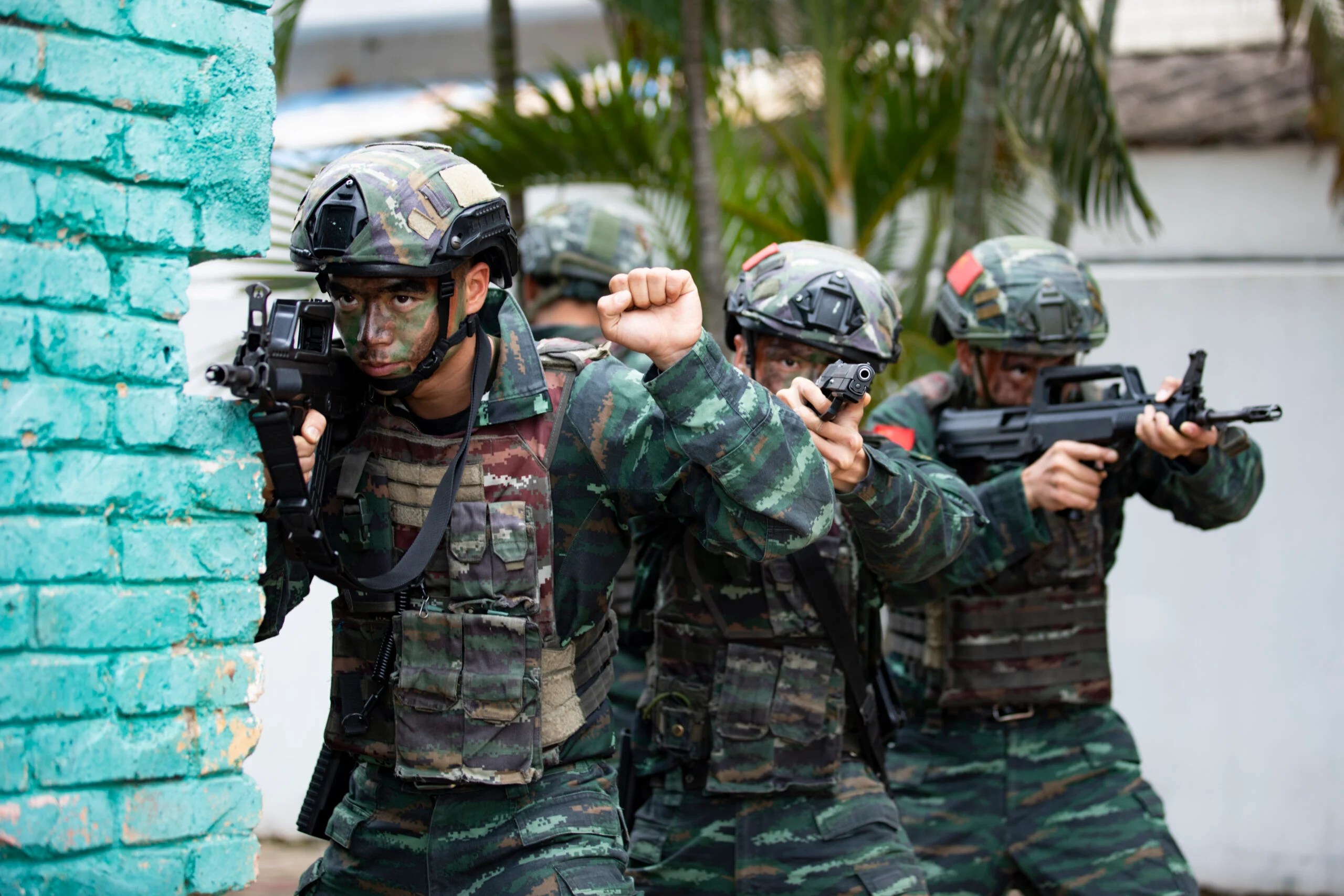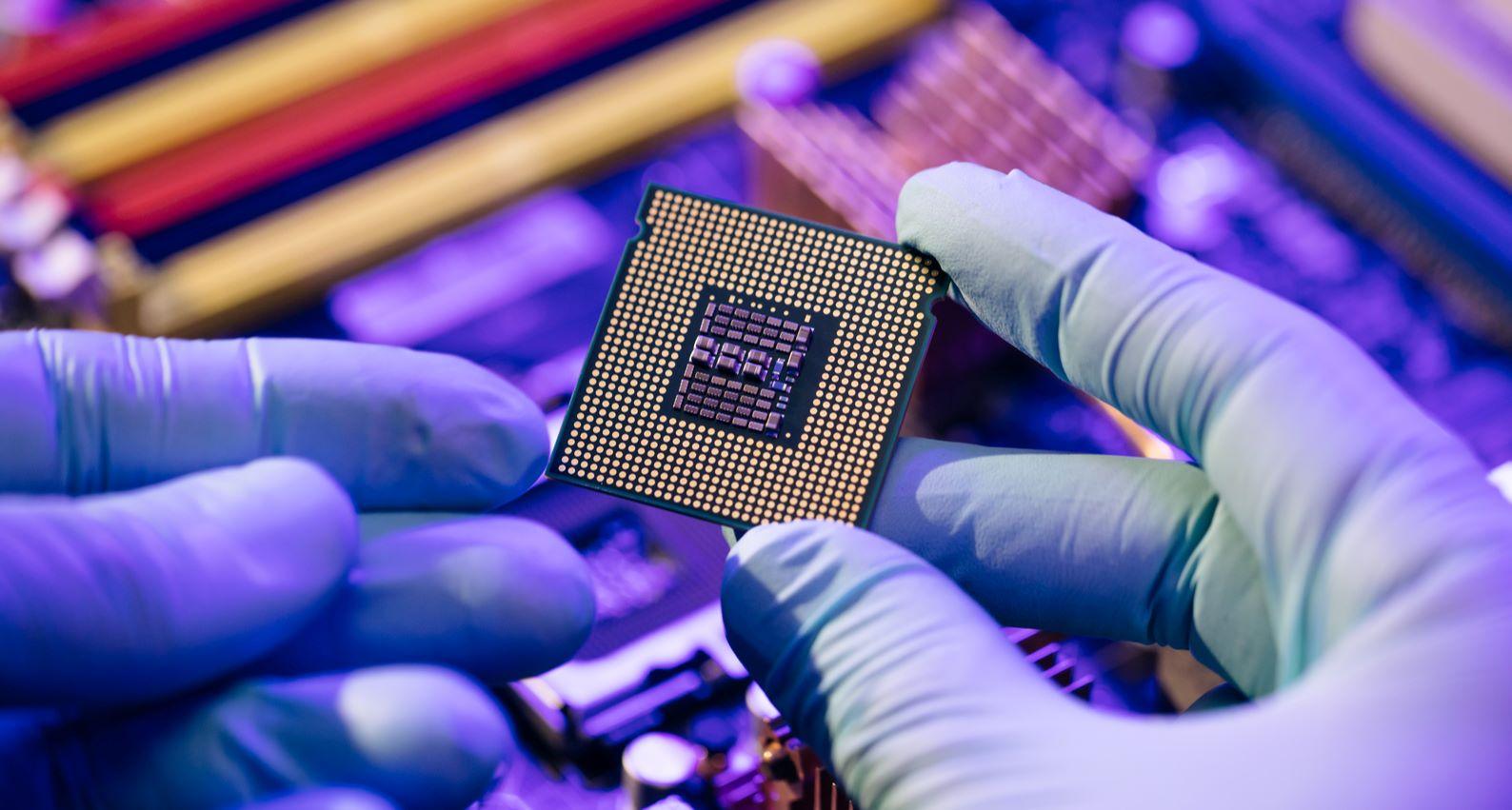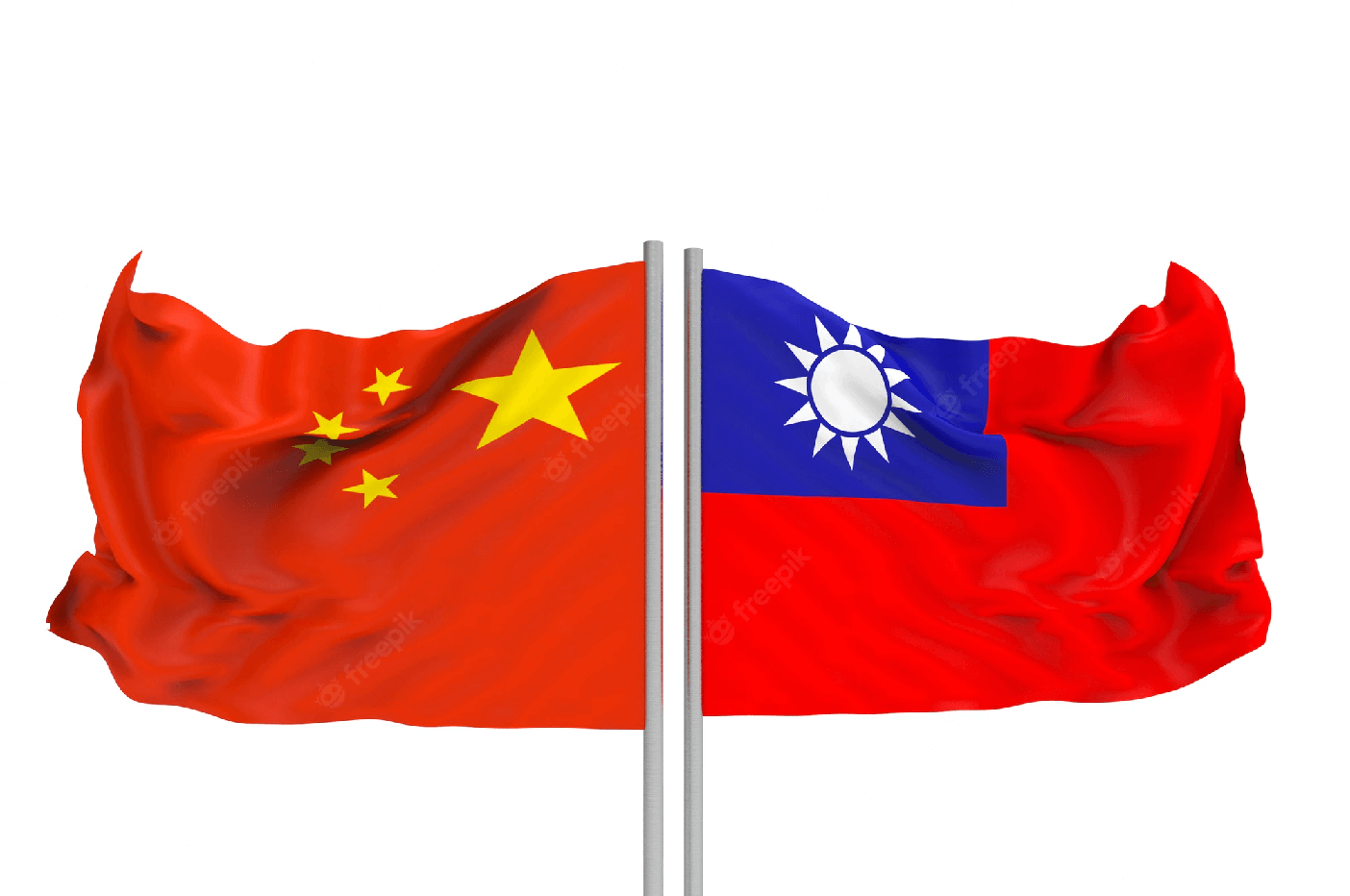A military deputy to China’s top legislative body has called for the People’s Liberation Army (PLA) to strengthen its study of urban combat.
This marks a clear political dimension to China’s military preparation to seize the island, where it is possibly willing to endure the full range of military operations and the politico-economic fallout of heavy and bloody urban fighting.
Unprecedented tensions continue in the western Pacific following former US Speaker Nancy Pelosi’s visit to the island in August 2022. The entire region of far east Asia has been under heightened military tensions in all its three flashpoints – the Korean Peninsula, the Taiwan Straits, and the South China Sea (SCS).
The Russian Federation, the Democratic People’s Republic of Korea (DPRK), and the People’s Republic of China (PRC) are seeing intensifying rivalry with the United States, Japan, and South Korea, as the North Atlantic Treaty Organization (NATO) also attempts to gain a foothold in the region.
While China officially advocates “Peaceful Reunification,” it has never ruled out a military recourse in the event of perceived irreversible provocations from Taiwan or the United States – Taiwan declaring independence; the island receiving major capital or strategic weapons systems; or the US or a major country recognizing the island as a nation by revoking the One China policy.
General Exhorts Readiness In Urban Warfare
PLA Lt Gen Ma Yiming, also the National People’s Congress (NPC) deputy, was part of a panel discussion involving NPC delegates from the PLA and the People’s Armed Police (PAP) at the body’s annual session on Sunday.
“(China should) strengthen research on specific issues such as urban operations and (logistics) support,” Ma was quoted in the official readout, according to a report in the South China Morning Post (SCMP).

Ma’s statement came as the government tabled a 7.2% defense budget hike the same day at the NPC’s opening session, translating to 1.55 trillion yuan (US$224.3 billion). Ma also served as the deputy chief of the Joint Staff Department at the Central Military Commission (CMC) from 2017 to 2020.
According to an April 2022 study by the Institute for the Study of War (ISW), the PLA has been “increasing its study, training, and preparation for future urban warfare over the past decade.” The report adds that it “often relies on observations of other militaries to inform its outlook (because it) has limited experience with urban warfare.”
The EurAsian Times had reported on videos of the PLA using virtual and augmented reality, along with specialized drones and close-quarter assault rifles, practicing transporting hundreds of tanks, trucks, and IFVs across the Taiwan Strait on civilian roll-on/roll-over (RoRo) ships.
This indicated the CPC was not ruling out the grinding, gruesome, and politically costly street-to-street fighting entailed when occupying a region.
The nature of its military exercises and flights into Taiwan’s air defense identification zone (ADIZ) since August 2022 have also been more specific, with even Western military observers noting the speed and scale at which the PLA is firming its attack plans.
Likewise, it has been acknowledged that the US military is doctrinally, numerically, logistically, and technologically far from being able to successfully thwart the PLA in the western Pacific.
But the equation changes when it comes to urban warfare. While the ISW report notes how such a campaign could present a particular challenge, given that over 90% of Taiwan’s population lives in cities”, the SCMP report draws parallels to the ongoing war in Ukraine.
“The PLA’s larger efforts to research urban combat could also be driven by Russia’s experience in Ukraine, where urban battles have been destructive and hard to win,” it said.
Street-To-Street Fighting Is A Different Ballgame
Possibly referring to the pitched battles in Soledar and Bakhmut (Artemovsk), which witnessed brutal house-to-house fighting, the scenario will be even bloodier, with thousands of body bags and heavy attrition, especially if the Taiwanese resistance turns into an insurgency.
But what warrants examination is the possible political calculation behind the urban warfare preparations. The development challenges certain commonly believed readings about China’s geo-economic and politico-economic strategies that inform its military doctrine.
China knows the economic repercussions of Taiwan being destroyed, for both itself and the world, and the impact on global semiconductor supplies. China, therefore, has long been assessed to prefer less kinetic actions and more psychologically overwhelming military maneuvers.
Such ‘gray zone’ tactics have been noted in the SCS and Ladakh, where Beijing raises the fear of escalation that deters countries from countering China’s military assertion of its territorial claims. Taiwan is aware of the fallout when the Taiwan Semiconductor Manufacturing Company’s (TSMC) chip foundries are destroyed in a PLA attack.

It changes the narrative in the US-Taiwan favor. It risks the neutrality China commanded among Asian countries, which remained tight-lipped, and did not criticize Beijing in its live-fire drills around Taiwan following the Pelosi visit.
China largely achieved this with its deep economic, commercial, and trade ties with all the countries in the region, where it is the top trading partner of almost every nation.
Thus, eroding American influence by offering something Washington failed to in terms of trade and investment and instead growing protectionist has been the Chinese approach. The Regional Comprehensive Economic Partnership (RCEP) and the Belt and Road Initiative (BRI) are efforts toward this end.
“War Inevitable, Urban Combat Even More”
Therefore, the focus on urban warfare indicates three possible trends in China’s calculations. One, it believes the encirclement and gradual destruction of Taiwan’s meager military will still not force its leadership to capitulate and accede to China since American influence has possibly ensured a large chunk of its society will resist. This requires urban fighting in Taiwan’s cities.
This means China is willing to endure the region’s diplomatic censure and economic collapse and risk handing a diplomatic victory to Washington. In other words, it is better than being continually challenged by the US.
Zhao DaShuai, a leading observer of China’s political and military issues on Twitter, doesn’t deny China will react militarily if peaceful reunification fails. But he disagrees it will be at the cost of its regional diplomatic and economic capital.
He indicates that the CPC and Xi Jinping will use force, just not when there are still unattained economic and military goals, ensuring the war succeeds on all fronts.
“When talking about reunification, ‘timing’ is the most important. When China attains enough financial gravitas, such as the Renminbi (RMB) being prominently traded internationally, and when China attains high tech independence,” Zhao said while speaking to the EurAsian Times.
But he maintains that “financial gravitas might take longer, but is not entirely necessary” and considers “high tech independence” as more important, particularly in semiconductors.
A glance at the risk and rewards benefits of currency internationalization and technological advancement lends credence to Zhao’s assessment. China is still a ‘middle-income country,’ yet to move away from its export-led growth and transition to its dual-circulation economy. The concept envisages China’s colossal population becoming consumers of many of its manufactured goods instead of foreign customers.
If a substantial portion of the worldwide trade is in Yuan, China becomes a highly debt-ridden economy like the US. The Dollar’s position as the pre-eminent reserve currency has caused the US to run a trillion-Dollar-a-year current account deficit.
The US buys more from the rest of the world than it sells and finances that deficit by selling a reserve asset (Dollar) to countries. Moreover, non-resident Chinese will likely acquire Yuan balances in China and buy assets. A large holding of such financial assets could heighten the vulnerability to external shocks.
Be Technologically & Economically Prepared To Ensure Asian Neutrality
China’s leaders and strategic community uphold technological advancement to maintain an edge over the US and translate that pre-eminence into economic and military benefits.
In July last year, Professor Song Jin of the Chinese Academy of Social Sciences (CASS) called for investing in education, health science and technology, innovation, research and development (R&D), and skills development.
Jin says these have resultant benefits on equitable economic development, industrial and supply chain resilience, better public health care, and military advancement. At the ongoing NPC session, Premier Li Keqiang said the country’s science and technology policies should build “self-reliance” for “key technological breakthroughs.”
As for semiconductors, sanctions by the US on China’s access to semiconductor forging technology and software are counterproductive. It has accelerated the development of China’s indigenous semiconductor fabrication technology, especially for chips under the 7nm node.
The Semiconductor Manufacturing International Corporation’s (SMIC) FinFET N+1 process promises to make 7nm chips without Extreme Ultra-Violet (EUV) machines while developing its lithography system.
The National Center for Nanoscience and Technology too announced a new 5nm laser lithography technology in 2020. “The more conservative estimates will have China developing Immersion DUV lithography in five years and EUV lithography in 10 to 15 years,” Zhao believes.
Technological development and trade pacts like the RCEP that geo-economically integrate the east Asian region will play a “paramount” role in “reassuring the Asia Pacific nations in preparing a possible military move on Taiwan.” This will make US sanctions almost ineffective.
This, according to Zhao, is China “fully preparing on all fronts” before making a military move on Taiwan, which is the second possibility. It is in line with its belief that if a war is to be fought, it must be won at all costs. Only considering all contingencies increases the chances of such a decisive victory.
The amount of preparation might be realized by the 2030s, presenting a more favorable cost-reward calculation for China, incentivizing it to act – if Taiwan has not been “peacefully” reunited until then. And if it does move on Taiwan and it comes down to an urban battle, whether China is willing to grind it out can be answered by its biggest lesson from the Russia-Ukraine war.

China Will Not Fight The Dirty Urban War?
“China’s biggest lesson is procuring large quantities of Precision Guided Munitions (PGM), especially in the 250 kg category. As Taiwan is very built up, small diameter PGMs are needed to clear enemies occupying farmhouses or residential buildings,” Zhao said.
“The PLA has learned that artillery-oriented combat doctrine does have its limitations. The PLA used to follow the Soviet artillery-heavy doctrine.
Since the 2016 reforms, it has adapted NATO’s air force and network-centric combined arms approach. So, the PLA will heavily invest in Close Air Support (CAS) and train the PLAAF to be capable of conducting complex coordination missions with PLA ground forces,” Zhao believes.
The sudden focus on urban warfare might convey to the US and Taiwan that China is prepared for all conventional warfare forms. Washington knows Beijing’s preference for diplomacy and preserving the high economic stakes.
This may lead some in the Department of Defense, State Department, and the White House to assume the PRC will not begin landing troops in Taiwan. Thus, China could convey that it isn’t afraid of old attritional battles.
- The author can be reached at satamp@gmail.com
- Follow EurAsian Times on Google News




